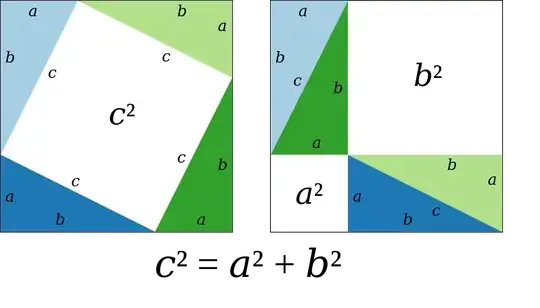From a foundations/logic perspective, for one to prove Pythagoras' theorem, one would require the definition $$d(\boldsymbol x, \boldsymbol y) = \sqrt{(x_1-y_1)^2 + \cdots + (x_n - y_n)^2}$$ of distance in the first place, which embeds Pythagoras' theorem within it, so to call it a theorem seems a bit circular (although you could nitpick and prove the case for a right-angled triangle which is rotated and whose right-angle is not aligned with the coordinate axes). But basically Pythagoras' theorem is already encoded in the definition.
So my question is, when we see "proofs" of Pythagoras such as the famous one below,
what are we proving exactly? Or, more precisely, what axioms are we building off so that this is considered a proof? Is there some logical framework in which this can be considered a real proof?
My guess is that this is simply something to aid our intuition and is based off our perception of the real world, and is in fact circular. Or perhaps it's based off something vague like Euclid's axioms.
Edit: For clarity,
I am mainly interested in whether the typical proofs we see are actually doing anything, in the modern sense. Allegedly there are hundreds of proofs of Pythagoras' theorem, some quite clever, but are they meaningful in any modern way?
